Speaker
Description
In this contribution, we present a new development of radiation-resistant silicon sensors. This innovative sensor design exploits the recently observed saturation of radiation damage effects on silicon, together with the usage of thin substrates, intrinsically less affected by radiation. The internal multiplication of the charge carriers will be used to overcome the small signals coming from thin substrates.
At the end of 2020, the Fondazione Bruno Kessler (Italy) delivered Low-Gain Avalanche Diodes (LGADs) produced on 25 and 35 $\mu$m thick p-type epitaxial substrates, namely the EXFLU0 production: I-V and C-V characterisation of the sensors has been performed before and after irradiation up to 1E17 1MeV neutron equivalent/cm$^2$, together with signal analysis from an infrared laser and beta stimulus.
The outcome of the laboratory tests will be implemented in the EXFLU1 production, in which optimisation of the sensor peripheries and the gain layer responsible for internal multiplication will be pursued. The goal is to pave the way for a new design of silicon sensors that can efficiently operate above fluences of 1E17 1MeV neutron equivalent/cm$^2$.
